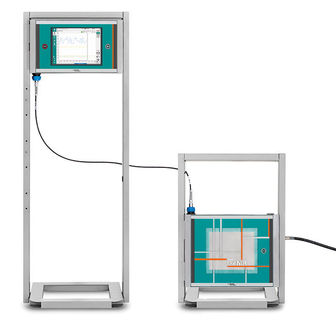To use all functions of this page, please activate cookies in your browser.
my.bionity.com
With an accout for my.bionity.com you can always see everything at a glance – and you can configure your own website and individual newsletter.
- My watch list
- My saved searches
- My saved topics
- My newsletter
International Agency for the Prevention of BlindnessThe International Agency for the Prevention of Blindness (IAPB) is a coordinating, umbrella organization to lead an international effort in mobilizing resources for blindness prevention activities. It was set up on January 1, 1975, by the late Sir John Wilson, the Founder President. The founding members were the World Blind Union, and the International Federation of Ophthalmological Societies. Product highlight
MissionIAPB aspired to link professional bodies, non-governmental organisations (NGOs), educational institutions, and interested individuals, with national programmes for the prevention of blindness. According to the WHO, more than 161 million people were visually impaired, of whom 124 million people had low vision and 37 million were blind all over the world in 2002 [1] [2]. It has been estimated that the number of blind people will rise to 76 million by 2020. Close to 75% of this blindness is avoidable. The treatment of cataracts, which accounts for nearly half of all blindness, is one of the most cost-effective health interventions known. In their study on the magnitude and cost of global blindness, Frick and Foster calculate that successful implementation of VISION 2020 would lead to the prevention of 429 blind-person years (defined as "one year of blindness for an individual"). This will have a dramatic effect on the lives of millions of people — those with blindness, as well as their caregivers. The first major achievement of IAPB was the establishment of the WHO Programme for Prevention of Blindness(WHO/PBL), with which, it then entered into an official relationship. HistoryIn the early 1980s, a group of Non-Governmental Development Organisations (NGDO) involved in eye care began to meet informally, as the "Partnership Committee". This group met annually to exchange information, and discuss priorities in the prevention of blindness and eye care, as well as, education and rehabilitation of blind, and visually impaired people. In order to formalise a collaboration between the International NGDO community and WHO/PBL, the Consultative Group was formed, an elected body of 10 NGDOs from the Partnership Committee. The Consultative Group met every two years with WHO/PBL, from 1986 to 1994. This body made important contributions to strategies for preventing blindness, but it was limited in what it could achieve due to a lack of designated funding. In 1994, at the Fifth IAPB General Assembly in Berlin, the Consultative Group was replaced by a "Task Force for Prevention of Blindness". The founder members were CBM International, and Sight Savers International, who were soon joined by Helen Keller International, and Orbis International. During the period 1996 to 1998, through a series of consultations between the Programme Advisory Group (PAG) of WHO, the Partnership Committee, and the Task Force, the document, "Global Initiative for the Elimination of Avoidable Blindness", was developed and adopted. The document sets out priorities and strategies to eliminate avoidable blindness. VISION 2020: The Right to SightThe Task Force was integrated within IAPB, becoming the "Task Force of IAPB", and a Memorandum of Understanding to implement the "Global Initiative to Eliminate Avoidable Blindness" was signed between IAPB and WHO. Under their joint auspices, "VISION 2020: The Right to Sight", was officially launched by Dr. Gro Harlem Brundtland, Director-General of WHO in Geneva on February 18, 1999, and further promoted by IAPB at the Sixth Assembly in Beijing, in September 1999. Following the launch of VISION 2020, the Task Force increased in membership, and in 2000, it was decided to hold joint-meetings of the IAPB Executive Committee and the Task Force, chaired by the President of IAPB. Since the launch of VISION 2020, a major concerted international effort is being made in areas such as advocacy, resource mobilisation, joint-planning, strengthening national capacities through human resource development, and the transfer of appropriate technologies to developing countries. Global technical plans were developed, highlighting the priority areas that need to be addressed in each region, and the proposed strategies to reach the goals of VISION 2020 in these regions. Complementing the technical plans, a business plan was developed to raise funds and implement the programme. Regional and national workshops, and launch events in WHO/IAPB regions, have been and are being organised to raise awareness of blindness prevention. Plans for prevention of blindness have also been developed at both national and district level. A conservative estimate of the productivity gain from VISION 2020 is $102 billion over the 20-year period. The costs of many of the interventions that form the VISION 2020 initiative are relatively modest, particularly for public health interventions, such as the distribution of Vitamin A capsules, and Mectizan for onchocerciasis. The World Sight Day, initiated by the SightFirst Campaign of Lions Club International Foundation, was integrated into VISION 2020, and is being held on the second Thursday of October, every year, since 2000. The World Sight Day has proved to be an effective advocacy and awareness tool. In May 2003, the 56th World Health Assembly of Ministers adopted a "Resolution on Elimination of Avoidable Blindness", which calls on all member states to prepare VISION 2020 plans by 2005. Further, member states are to establish national coordinating committees, which are to start implementing the national plans by 2007, and to report back in 2010. The Ministers proposed a Monitoring Committee to oversee the programme. The resolution also supports the mobilization of resources to ensure a successful program. In response to the Resolution, a VISION 2020 Tool Kit has been developed to provide guidance and support for Governments and health professionals. New developmentsAll these developments have necessitated revisions in the structure and governance of the IAPB, as laid down in the current constitution. A Constitutional Review Committee was set up in 2002 with Dr. Pararajasegaram, as Chair, to amend the Constitution, incorporating the opinions of stakeholders. As well as modifications in terminology and structure, the new Constitution was aligned with the Charity Law in UK, where IAPB is now incorporated. The new Constitution was ratified by the Seventh General Assembly of IAPB in Dubai, in September 2004. The WHO released new data on the prevalence of global blindness in late 2004. According to the new figures, in 2002, 161 million people were visually impaired, of whom 124 million people had low vision, and 37 million were blind. Cataract (47.8%) continues to be a major cause for global blindness, especially in the developing countries. Glaucoma (12.3%), age-related macular degeneration (8.7%) and diabetic retinopathy (4.8%), along with cataract, account for close to 75% of all blindness in the world. Taking into account the changes in world population over the past 12 years, the magnitude of blindness in 2002 appears to be lower than was projected — 37 million, instead of the projected 52 million. These figures seem to indicate early success for VISION 2020, but also continue to highlight the challenge of achieving the VISION 2020 goal of eliminating avoidable blindness.
|
|
| This article is licensed under the GNU Free Documentation License. It uses material from the Wikipedia article "International_Agency_for_the_Prevention_of_Blindness". A list of authors is available in Wikipedia. |







